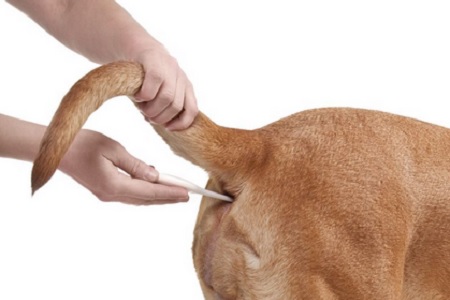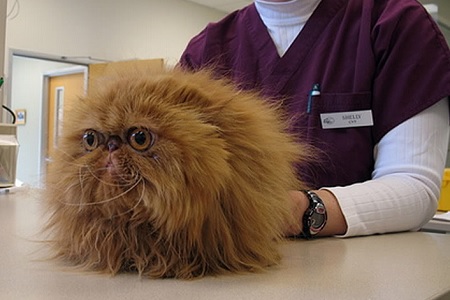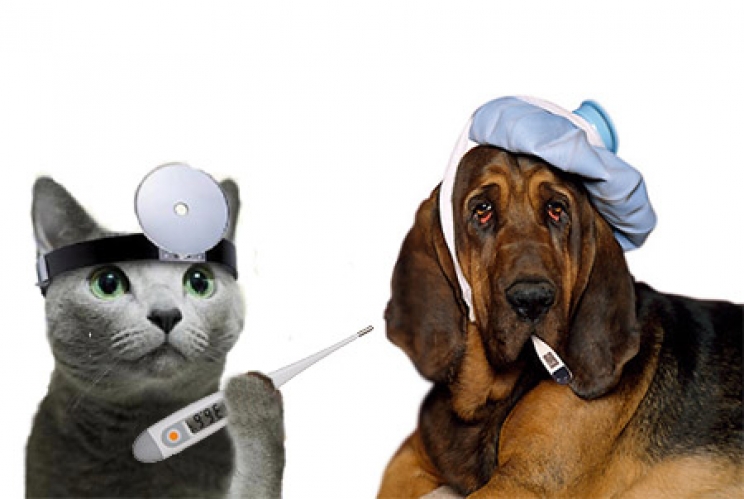Even our animal can experiment temperature rise and fever. It is often very difficult for owners to distinguish a fever from a milder illness. For this reason, it is very important to be able to perform a simple operation by yourself such as measuring the temperature of the dog and cat. Let's see together how it's done.
What is needed?
What you need is:
- Alcohol
- Cotton wool
- Digital thermometer
- Vaseline or other lubricants
As for the thermometer, we have specified the type precisely to avoid the use of the classic mercury thermometers, now obsolete and even forbidden even for "human" use.
Choose a digital thermometer for children or pets, with features that make it as easy as possible to measure the temperature. The ideal would be to be able to get a thermometer with a thin and flexible tip, which follows the movements of the animal without causing pain.
It is also important that the measurement is very quick, because the dog or cat is unlikely to accept this type of operation. Make sure, therefore, that the thermometer is fast and that it has a buzzer to signal the end of the measurement.
Steps
- We take the animal and place it on the table or in any case on a high enough surface, to feel more comfortable during the measurement. Always let someone help us to keep the dog or cat still;
- We ask our assistant to immobilize the animal as far as possible, without feeling forced. In the case of the cat, if it really doesnt want to cooperate, we can use the classic towel method, wrapping it around the cat's body, keeping the paws inside, so that it doesn't scratch us;
- Disinfect the tip of the thermometer with a cotton swab soaked in alcohol. We wait a few moments, in order for the alcohol to evaporate;
- We apply Vaseline or another specific lubricant to the tip of the thermometer;
- We lift the tail of the animal and locate the anus. In the female, it is the opening immediately below the tail, while in the male it is easier to visualize;
- We insert the tip of the thermometer slowly and gently into the rectum, making sure that they remain inside at most 2-2.5 centimetres, depending on the size of the animal;
- We hold the thermometer slightly tilted and wait for the acoustic signal;
- We observe the temperature indicated on the display;
- Disinfect the thermometer again;
- We reward the dog or the cat.
 Lately, digital thermometers now allow you to measure the temperature directly from the animal's ears. In any case, the temperature is taken more accurately via rectum.
Lately, digital thermometers now allow you to measure the temperature directly from the animal's ears. In any case, the temperature is taken more accurately via rectum.
Some people argue that it is not necessary to use thermometers, but that it is sufficient to evaluate other parameters, such as the humidity of the nose or the temperature of the ears. These are absolutely inaccurate methods, which cannot provide precise information on the actual temperature of the animal.
How to correctly interpret values
As we have extensively explained in the article on fever in dogs and cats, the ideal temperature varies according to the age, species and size of the animal.
The reference values are:
- Puppies and kittens: 38.8-39 ° C;
- Adult cats: 38-38.2 ° C;
- Small dogs: 38.5-39.2 ° C;
- Large and giant dogs: 37.5-38.5 ° C
 However, a slight increase in temperature can be considered normal in some situations. For example:
However, a slight increase in temperature can be considered normal in some situations. For example:
- After intense physical activity;
- Staying in a very hot environments;
- Fear, for example during a visit to the vet;
- Anxiety and stress.
For this reason, it is always important to observe other symptoms that the animal with a fever normally manifests. Between these:
- Sleeps a lot;
- Refuses to eat and drink;
- Has no desire to move;
- He feels discomfort if we try to pick him up;
- Breathing is more frequent;
- The nose and ears feel warm to the touch.
In these cases, we can proceed with measuring the temperature rectally, if the animal agrees to be manipulated. Next, we will need to contact our vet to find out the cause of the fever.










